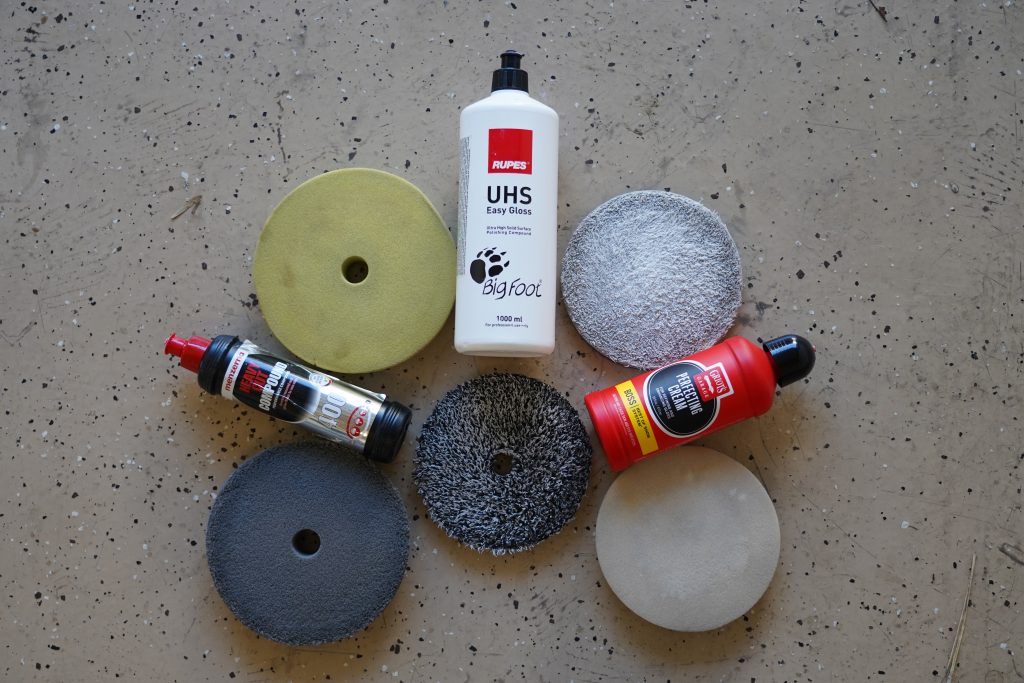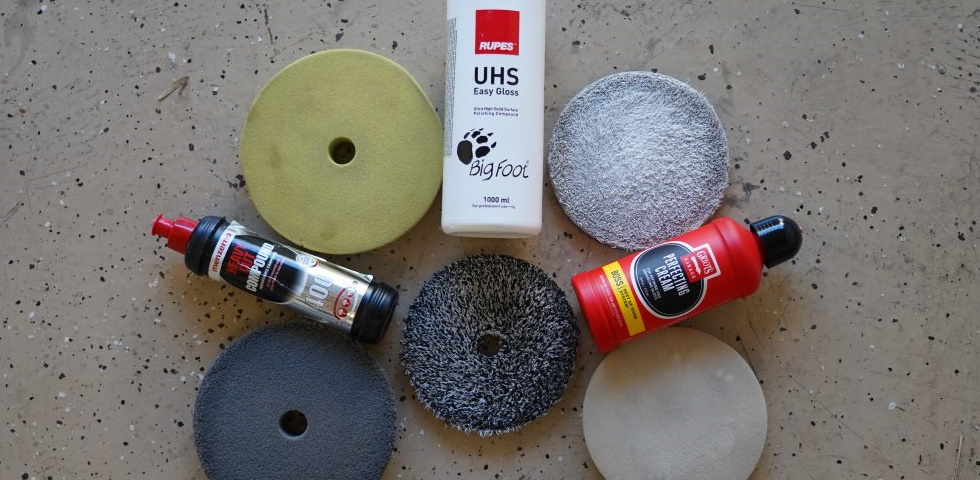
When I started getting into detailing I would read posts of detailers who were performing paint correction. They would be doing their test spots and say things like, “after testing I found the best combo to be 3 drops of this compound, 1 of this polish, and 2.456 sprays of de-ionized water.” I would think to myself, how in the world did you come to that conclusion? There are already tons of combinations of product and pad to get you desired results, it is one of the aspects of detailing that I like, no one way us 100% right, but also make sit confusion for a new detailer. So why introduce even MORE combinations with mixing products? What happens when you get 3 panels in and now that pad is loaded up with multiple products? What if they don’t break down the same way? What if…
I don’t know about you, but I took algebra and got at least a B. If I learned one thing, it’s that you want to reduce or isolate the variables in order to solve the equation. Which is easier:
A – 25=X+10
B – 25=X+Y
In equation B there are multiple “correct” answers, but equation A only has 1.
Now think about the number of variables that exist in paint correction; pad, product, arm speed, arm pressure, air temperature, air humidity, paint condition, type of paint, etc. So lets cut out any as many of those as we can.
So if I am in the compounding stage, for example, I am going to grab a Meguiars Microfiber Pad and either Mezerna SHCC 300 or Heavy Cut Compound, depending on how severe it is. I know what the air temp, humidity and paint condition are in and while testing I can see the type of paint is it two-stage or has a clear coat, is it hard or soft, etc. If it leaves the pad and product the same, I have now reduced the variables to two, arm speed and arm pressure, both of which are completely under my control. So reduce the arm speed and increase the pressure to give the product more time to work and I get the result I need.
If you don’t reduce the number of variables you could be left chasing what you are changing to get the proper result. You can then, over time, see what combos work in what situations and start there on the next car, making you test spot timing shorter and shorter. Reduce, reuse, recycle? Those ads must be getting to me.
Detailing has no one correct way, I would say 1,000 ways to skin a cat, but why would you be skinning a cat, that’s weird. If you like to run combos of products and get good results then great, but especially when starting out, isolating the number of variables will help you get better results and understand the results you are getting.
Related Posts

